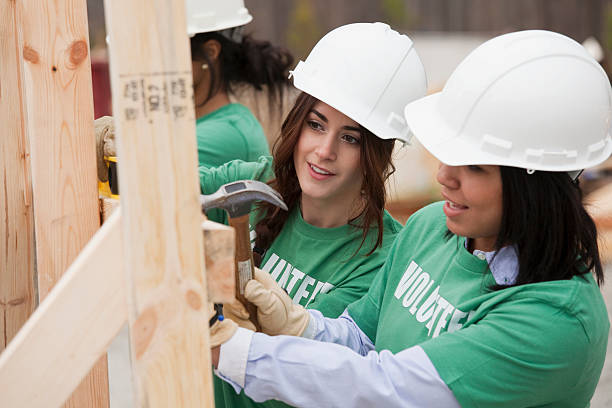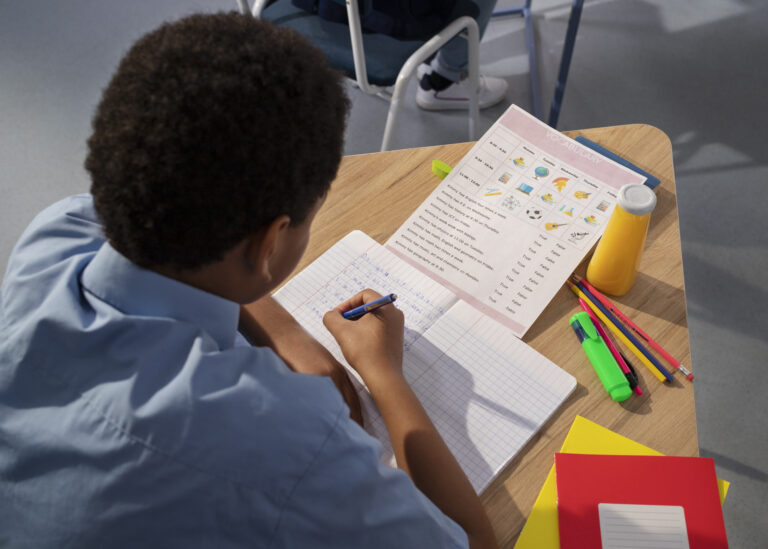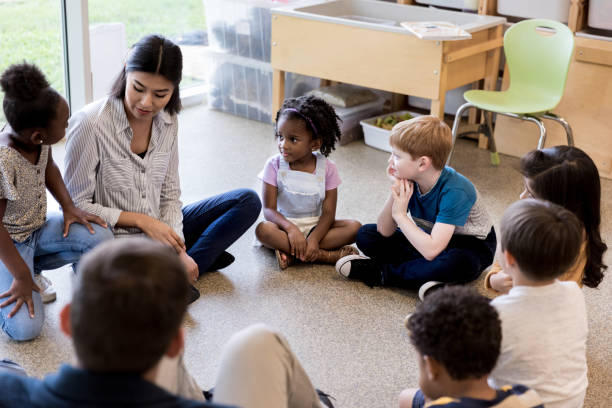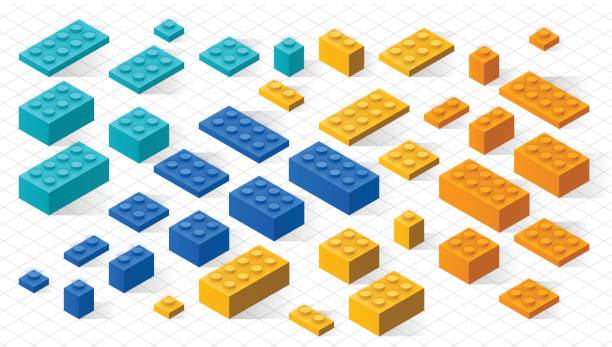23 Engaging Community Helpers Preschool Activities In 2023
Community helpers play a vital role in society, ensuring the well-being and safety of our neighborhoods. Teaching preschoolers about these everyday heroes not only enhances their understanding of the world but also cultivates empathy and respect.
By engaging in hands-on activities related to various community helpers, young learners develop a deep appreciation for those who serve their community.
A community needs a large number of people to function effectively and improve the quality of life for everyone.
It is crucial to teach pupils about community volunteers and the kinds of roles they play in our daily lives. They do, in fact, serve as a reminder of how connected everyone is when they live in a community.
In 2016, GIIS Indore celebrated “Community Helpers Day” on the school grounds with a lot of fanfare in an effort to spark the students’ imaginations and improve their social development abilities.
After the whole activity, they were able to gain confidence and respect for those who, offer their extensive services, making our lives easier.
Additionally, this allowed them a chance to comprehend their surroundings and determine their place in it.
So, we assure you of 23 engaging and interactive community helper activities designed specifically for preschool-aged children. Get your chips ready as we explore.
But before then, we will take a look at some key terms about community helpers and what is actually meant.
Who Are The Community Helpers?
People who are community helpers assist the general populace with their health and well-being.
Doctors, nurses, chefs, bakers, astronauts, soldiers, teachers, dentists, bus drivers, coaches, babysitters, fishers, plumbers, firefighters, farmers, librarians, and volunteers are a few examples of those who give back to the community.
Consider all the locals who work in these fields. They have a significant impact on society. They have a great sense of social responsibility.
Why Do We Need Community Helpers?
Community helpers play a crucial role in maintaining the community’s safety and health, improving the quality of life for local residents, and assisting the community in operating more effectively.
In addition to what I said earlier, community helpers include the postman, the farmer down the road, and the grocery store clerk.
They are like angels in human forms.
Also, children gain an understanding of belonging to a community by learning about community helpers, which promotes a sense of belonging.
It promotes a sense of cooperation among people in a child’s environment. It’s crucial from a safety standpoint as well.
What are the Characteristics of Community Helpers?
It needs both analytical and emotional reasoning to support others.
Because empathy and strong intuition are daily requirements for social workers, those with high emotional quotients make successful social workers.
To understand things clearly and find the best answers, critical thinking is crucial.
This list is in no particular order or factor of ranking.
23 Engaging Community Helpers Preschool Activities In 2023

Each activity aims to promote learning, creativity, and social-emotional development while fostering a sense of community and empathy.
1. Police Officer Identification Badges
Create police officer identification badges using cardboard or construction paper.
Encourage children to design their badges and talk about the role of police officers in keeping the community safe.
Facilitate a discussion about how they can approach a police officer if they need help or are lost.
2. Doctor’s Office Pretend Play
Set up a pretend doctor’s office with props such as stethoscopes, bandages, and medical kits.
Allow children to take turns playing the doctor, nurse, and patient.
Discuss the importance of doctors in keeping people healthy and answer any questions they may have about visiting the doctor.
3. Fire Safety Drill
Organize a fire safety drill by creating a pretend fire scenario. Teach children how to “stop, drop, and roll” and the importance of calling 911 in an emergency.
Practice evacuating a room and identifying safe meeting places outside.
4. Mail Carrier Letter Sorting
Provide envelopes with letters and numbers written on them. Set up a sorting station with mailboxes labeled with corresponding letters or numbers.
Help children match the letters or numbers on the envelopes to the correct mailboxes, introducing the concept of mail sorting.
5. Chef’s Hat Decorating
Invite children to decorate their own chef’s hats using markers, crayons, and stickers. Talk about the role of chefs in restaurants and the importance of healthy eating.
Consider having a cooking activity where children can make a simple snack together.
6. Construction Zone Sensory Bin
Fill a sensory bin with sand, rocks, small construction vehicles, and toy tools. Let children explore the bin, digging, scooping, and building.
Discuss the roles of construction workers in building houses, roads, and other structures.
7. Librarian Storytime
Create a cozy reading corner with books, cushions, and a sign that says “Library.” Take turns being the librarian and reading stories aloud.
Discuss the role of librarians in helping people find and borrow books.
8. Veterinarian Clinic Role Play
Set up a veterinarian clinic with stuffed animals, bandages, and toy medical tools. Encourage children to take on the role of a veterinarian, providing care for the “injured” animals.
Discuss the responsibilities of veterinarians in keeping pets healthy.
9. Farmer’s Market Dramatic Play
Create a farmer’s market with pretend fruits, vegetables, and a cash register. Allow children to pretend to be farmers, customers, or cashiers.
Discuss the importance of farmers in growing food and how we can support local farmers.
10. Traffic Light Color Sorting
Use colored circles or construction paper to create a traffic light. Ask children to sort objects of corresponding colors, such as red, yellow, and green toys or blocks.
Discuss the role of traffic lights in keeping people safe on the roads.
11. Construction Paper Police Cars
Provide children with construction paper and markers to create their own police cars. Talk about the different parts of a police car and the responsibilities of police officers in enforcing the law.
12. Community Helper Puzzles
Create puzzles featuring different community helpers. Have children assemble the puzzles and discuss each profession as they complete them.
Encourage conversation about the roles and responsibilities of each community helper.
13. Recycling Sorting Game
Set up recycling bins labeled with different types of recyclables, such as paper, plastic, and glass. Provide children with items to sort into the appropriate bins.
Discuss the importance of recycling and how it helps the environment.
14. Grocery Store Math
Create a pretend grocery store with items labeled with prices. Give children play money and encourage them to “buy” items, practicing simple addition and subtraction.
Discuss the role of grocery store workers in providing food to the community.
15 Dentist Role Play
Set up a dentist’s office with toothbrushes, mirrors, and dental floss. Let children take turns being the dentist and the patient, discussing the importance of oral hygiene and regular dental check-ups.
16. Community Helper Matching Game
Create a matching game with cards featuring community helpers and their corresponding tools or vehicles. Have children match the cards and discuss each profession as they play.
17. Trash Collector Sensory Play
Fill a sensory bin with shredded paper or plastic. Provide children with toy garbage trucks and encourage them to “collect” the trash.
Discuss the role of trash collectors in keeping the community clean.
18. Construction Worker Safety Gear Dress-up
Set up a dress-up area with construction worker costumes and safety gear. Discuss the importance of wearing safety gear and explain how construction workers stay safe on the job.
19. Doctor’s Office Fine Motor Activity
Provide children with tweezers and cotton balls. Encourage them to use the tweezers to pick up the cotton balls and place them in a small container, developing fine motor skills.
Discuss the role of doctors and their steady hands during procedures.
20. Crossing Guard Outdoor Activity
Take children outside and designate one child as the crossing guard. Have them practice safely stopping traffic for their classmates as they cross the “street” (a designated area).
Discuss the importance of crossing guards in ensuring pedestrian safety.
21. Community Helper Puppet Show
Create simple puppets representing various community helpers using paper bags or craft sticks.
Encourage children to put on a puppet show, narrating stories or scenarios that involve different community helpers.
22. Baker’s Dough Sensory Play
Provide children with homemade playdough and baking tools.
Let them mold and shape different baked goods, discussing the role of bakers and the importance of measuring ingredients accurately.
23. Construction Worker Block Building
Give children blocks or Lego bricks and challenge them to build structures like houses, buildings, or bridges. Discuss the importance of planning and teamwork, reflecting the work of construction workers.
How Much Do Community Helpers Make?
In the US, a community worker or helper makes an average pay of $40,029. The usual salary range for community workers is $28,000 to $55,000 per year.
Community workers make an average of $19.24 per hour.
Conclusion
Engaging preschoolers in activities centered around community helpers not only enhance their understanding of different professions but also fosters empathy and respect for those who serve their community.
Through hands-on experiences, discussions, and pretend play, children develop a greater appreciation for the roles and responsibilities of community helpers in their neighborhoods.
These 23 engaging activities provide a wide range of opportunities for preschoolers to learn and explore various community helpers, cultivating their knowledge, creativity, and social-emotional development.
By integrating these activities into preschool curriculum or home learning environments, educators and parents can effectively teach children about the importance of community helpers and the value they bring to society.
Through these experiences, young learners are empowered to become active, caring members of their communities, shaping a future filled with empathy and understanding.
Frequently Asked Questions
What are community helpers?
Community helpers are individuals who provide essential services to their local communities. They include professions such as police officers, firefighters, doctors, nurses, teachers, librarians, mail carriers, construction workers, and more. Community helpers play vital roles in maintaining the safety, well-being, and functionality of society.
Why is it important to teach children about community helpers?
Teaching children about community helpers is crucial for several reasons. It helps children understand the roles and responsibilities of different professions, fosters empathy and respect for those who serve the community, promotes a sense of belonging and interconnectedness, and instills an appreciation for the services provided by these helpers.
How can I introduce community helpers to preschool-aged children?
These can include read-aloud books, role-playing activities, pretend play with costumes and props, field trips or visits from community helpers, arts and crafts projects related to specific professions, and interactive games or puzzles featuring community helpers. Incorporating hands-on activities and discussions into the learning process can make it more interactive and memorable for young learners.
How can teaching about community helpers promote social-emotional development?
Teaching children about community helpers can contribute significantly to their social-emotional development. Learning about these helpers nurtures empathy and understanding by highlighting the important work they do to support others. By discussing the feelings and needs of community helpers, children develop an appreciation for compassion, cooperation, and helping others.
How can parents and educators reinforce the concept of community helpers beyond classroom activities?
Parents can take children on outings to meet community helpers in person, such as visiting a fire station or inviting a police officer for a Q&A session. Engaging in discussions about real-life scenarios where community helpers are involved, like calling 911 during emergencies, can also reinforce their significance.
Reference
- https://study.com/academy/lesson/what-are-community-helpers.html
- https://news.globalindianschool.org/indore/knowing-our-community-helpers
- https://www.handyhandouts.com/viewHandout.aspx?hh_number=251&nfp_title=Community+Helpers+Help+Us+Learn
- https://www.opencolleges.edu.au/careers/blog/10-personality-traits-required-be-community-services-worker






